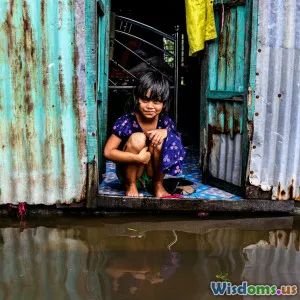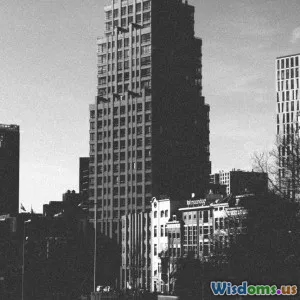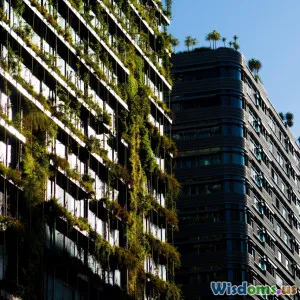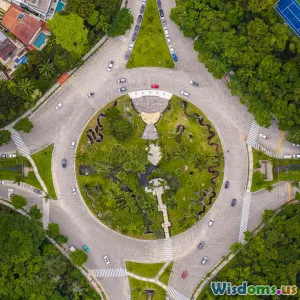
Building for Resilience Lessons from Flood Resistant Urban Design
8 min read Explore innovative flood-resistant urban design strategies that build resilient cities equipped to handle climate challenges. (0 Reviews)
Building for Resilience: Lessons from Flood Resistant Urban Design
Introduction
Imagine waking up to streets submerged under water, homes flooded, and vital infrastructure rendered unusable. Around the world, millions face such realities every year as flooding becomes an increasingly frequent and severe climate threat. Urban areas—already strained by population growth and aging infrastructure—buckle under the pressure of rising waters, leading to extensive social, economic, and environmental damages.
But what if cities could be designed not just to endure floods, but to thrive despite them? What if urban landscapes were an active part of flood management instead of succumbing to disaster? This article explores the transformative power of flood-resistant urban design in building resilience — turning vulnerability into a blueprint for safer, adaptive, and more sustainable cities.
Why Urban Resilience Matters in the Age of Floods
Global climate patterns are shifting. According to the United Nations Office for Disaster Risk Reduction, floods are the most frequent and deadliest natural disaster worldwide, accounting for over 40% of all weather-related hazards. Urbanization compounds risks:
- Impermeable surfaces increase runoff.
- Dense populations put more lives and assets at risk.
- Aging infrastructure often lacks the capacity to handle intense rainfall.
Rethinking how we build cities in the face of these realities is no longer optional — it’s urgent. Resilience in this context means the ability of urban systems to withstand, adapt to, and quickly recover from floods while protecting lives and livelihoods.
Core Principles of Flood Resistant Urban Design
1. Integration of Green Infrastructure
Green infrastructure involves the use of vegetation, soils, and natural processes to manage water. Examples include bioswales, green roofs, urban wetlands, and permeable pavements.
-
Case Study: Rotterdam, Netherlands Rotterdam incorporates "water plazas" — multifunctional public spaces that temporarily store rainwater during storms, reducing pressure on drainage systems and preventing flooding.
-
Benefit: Enhances water infiltration, reduces runoff, improves air quality, and increases urban greenery.
2. Adaptive and Elevated Building Designs
Rather than resisting water through barriers alone, buildings can be elevated or designed to allow controlled flooding without damage.
-
Example: The Floating Pavilion in Rotterdam is a prototype that floats in flood-prone areas, demonstrating how architecture can adapt to rising water levels.
-
In flood-prone areas of Southeast Asia, houses on stilts have been traditional flood-adaptive tactics, now reimagined in modern designs using durable materials.
3. Multi-Functional Spaces
Making spaces serve multiple purposes—recreational, ecological, and flood management—maximizes land use efficiency and community value.
- San Antonio’s Mission Reach revitalized an 8-mile stretch of the San Antonio River with parks and improved biodiversity, while enhancing flood control.
4. Smart Infrastructure and Monitoring
Digital tools, sensors, and smart water management allow cities to anticipate flooding and respond promptly.
- Seoul’s Cheonggyecheon Stream Restoration includes real-time water level monitoring with automated gates to regulate flow.
5. Community Engagement and Equity
Flood resilience isn’t just technical—it’s social. Engaging communities, particularly vulnerable populations, ensures designs meet real needs and promote social justice.
- New Orleans post-Katrina initiatives emphasized local input in rebuilding resilient neighborhoods, focusing on affordable housing and flood protection.
Real-World Success Stories
Singapore’s ABC Waters Program
Singapore has transformed traditional urban drainage networks into aesthetically pleasing, ecologically functional water bodies integrated into communities. This initiative reduces flooding risks while enhancing urban livability.
New York City’s Resilient Design Guidelines
Following Hurricane Sandy in 2012, NYC developed resilient building standards for flood zones, including elevated utilities and floodproofing critical infrastructure. Large-scale investments like the East Side Coastal Resiliency Project aim to protect over 110,000 residents from storm surge.
Copenhagen’s Cloudburst Management Plan
Copenhagen addresses extreme rain events with a hybrid approach combining blue-green infrastructure and public spaces that temporarily store stormwater, preventing combined sewer overflows.
The Economic and Environmental Payoff
Investment in flood resilient urban design delivers compelling economic returns. A report by the Global Facility for Disaster Reduction and Recovery shows that every $1 invested in disaster resilience leads to $4 in benefits by preventing losses and facilitating recovery.
Environmentally, integrating natural systems within urban areas supports biodiversity, improves air and water quality, and creates healthier habitats for people and wildlife.
Challenges and Considerations
Despite proven benefits, several barriers exist:
- Funding and governance: Large-scale resilience projects require coordinated political will and investment.
- Maintenance: Green infrastructures need ongoing care and community stewardship.
- Equity issues: Ensuring fair distribution of resources and benefits is critical to avoid reinforcing social inequalities.
Conclusion: Towards a Resilient Urban Future
Flood resistant urban design represents a pivotal shift from reactive disaster management to proactive resiliency building. It combines engineering, ecology, community insight, and visionary planning to shape cities that not only withstand natural challenges but flourish because of them.
Architects, planners, policymakers, and citizens must collaborate to embed resilience into the very DNA of urban environments. By embracing adaptable infrastructures, green solutions, and inclusive approaches, cities worldwide can become beacons of safety and sustainability in an era of climate uncertainty.
The lessons learned from flood resistant urban design are universally applicable: resilience isn’t a destination, but an ongoing journey. As architect and resilience expert Bill Baker eloquently states, "Resilience in architecture is about creating systems that can last under stress, adapt, and continue to serve those who rely on them."
The floodwaters will rise—how our cities respond will define the health, safety, and prosperity of future generations.
References:
- United Nations Office for Disaster Risk Reduction, 2023
- Rotterdam Climate Initiative, Various Projects
- New York City Department of City Planning, Resiliency Guidelines
- Global Facility for Disaster Reduction and Recovery, Economic Reports
- Singapore PUB ABC Waters Program Documentation
- Copenhagen Cloudburst Management Plan
Rate the Post
User Reviews
Popular Posts




















